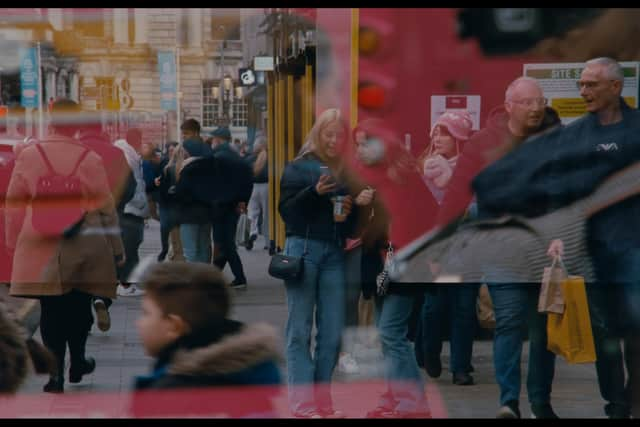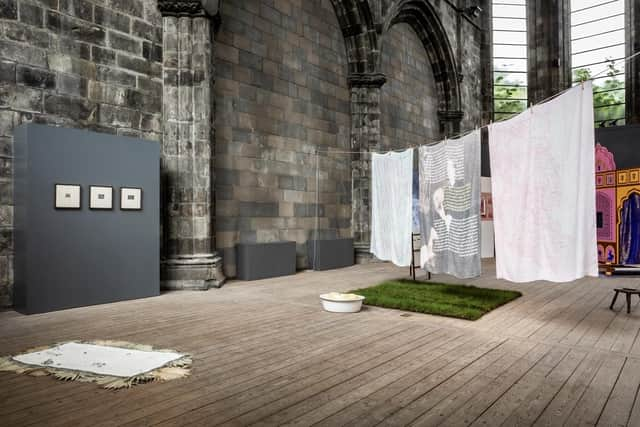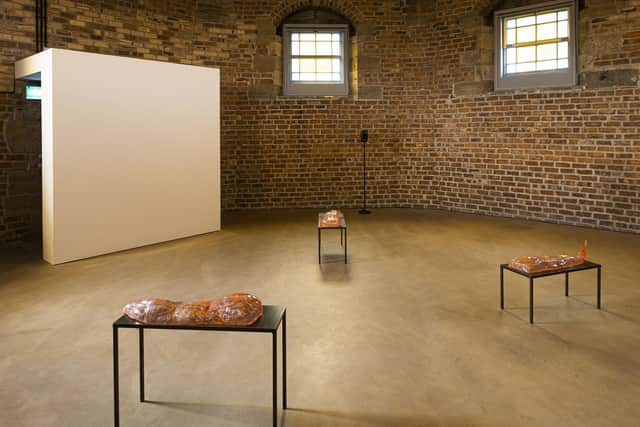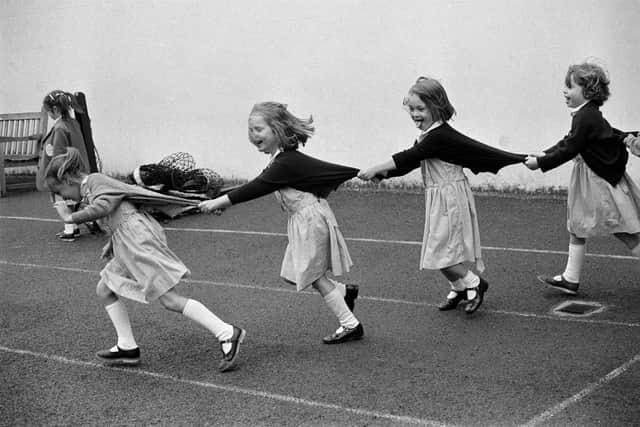Edinburgh Art Festival reviews: Alberta Whittle | Maria Fusco & Margaret Salmon | Platform | Tarek Lakhrissi | Rabindranath X Bhose | Markéta Luskačová
This year’s Edinburgh Art Festival, in its first iteration under new director Kim McAleese, focusses its programme of commissions on events and performances. The emphasis is on bringing people together and bringing to the fore voices which might be regarded as marginal.
There was nothing marginal, however, about Alberta Whittle’s performance, The Last Born – making room for ancestral transmissions (****), in which Whittle and her powerful cohort of black women took centre stage in Parliament Hall, one of Edinburgh’s most charged spaces. The seat of the Scottish Parliament from 1639-1707, it is now part of the law courts and rarely accessible to the public. Beneath the floor, according to Whittle, is “a place of judicial torture”.
Advertisement
Hide AdThe women occupy every inch of the space, filling it with ululating voices and stamping feet, eyeballing the audience to make sure we’re paying attention, because they have a few things they want to say. Consider laws which allow police to strip search children (a disproportionate number of whom are people of colour), or racialised bullying in Scottish schools (Whittle reads aloud a long list of Edinburgh schools where black children have felt unsafe) or deaths in police custody, again disproportionately black.


The performance picks up elements of her film Lagareh – The Last Born, made for the Venice Biennale in 2022, currently in her show Create Dangerously at National Galleries of Scotland (Modern One). While she is always keen to humanise her argument, encouraging us to think of the people we love, there is a powerful anger here.
Urging us to “unlearn narratives based on white supremacy” and “invest in love”, she ends the performance as the film ends, with a sung lament for Sheku Bayoh, who died after being restrained by police in Kirkcaldy in 2015, and a litany of names of those who have died in policy custody, instructing the audience repeating each name. It’s a moving communal moment in which one feels both implicated and uplifted.
History of the Present, the “film-opera” directed by Maria Fusco and Margaret Salmon (****), takes a completely different approach. Screened at the Queen’s Hall, it the opposite of a didactic history lesson, being resolutely contemplative and open-ended in tone. Fusco’s aim was to make a film about the Troubles in Belfast which foregrounded women’s experience and didn’t succumb to any of the cliches of the genre. The screening was accompanied by live music by percussionist Angela Wai Nok Hui.
The ideas of the work are chiefly conveyed through sound: opera singer Héloise Werner improvising the sounds of the Troubles; composer Annea Lockwood “playing” the corrugated iron Peace Walls like musical instruments. Wai Nok Hui’s work becomes another layer on top, an incredible range of sounds produced by various instruments, objects and her own voice.


It’s not an easy work. Although Salmon’s beautiful, lingering cinematography of everyday Belfast creates a space to contemplate, there are sections which are puzzling, like the repeated spoken stage directions. Fusco’s libretto is superb, and one might wish for more of it, but the work is more ambient and ambiguous than that. It’s not “about” the Troubles, as much as conveying something of what it meant to live ordinary life, year in year out, in the presence of conflict.
Advertisement
Hide AdThe regular Platform exhibition (****), EAF’s award for early career artists takes place in the historic setting of Trinity Apse, an ideal place for another history lesson – or four. Richard Maguire unearths the history of Peggy Hall, the illegitimate child of an East India Company man and a woman of Indian descent, and evokes her in objects, jewellery and tiny, delicate drawings. Ruby Kanhye’s prints look at Mauritius, where his roots are, a country steeped in layers of colonialism.
Crystal Bennes explores another lost piece of history, a proposal made following Cromwell’s “reconquest” of Ireland for poor English women to be sent to become the forced wives of Irish men as instruments of colonisation. Her history lesson is printed on fabrics which are hung on a washing line.
Advertisement
Hide AdAqsa Arif delves into South Indian female archetypes, Sohni, the virtuous heroine who dies for love, and the Tawaif, the courtesan and entertainer from the Mughal era. She has made a dual-screen film, featuring performer Nikhita Devi, which is housed in a structure inspired by a Tawaif house in Bangalore. Like the other works here, it is well thought out, carefully presented and aesthetically impressive.


Less so, Tarek Lakhrissi’s I wear my wounds on my tongue (II) at Collective (**). The title comes from queer Asian-American writer and performance artist Justin Chin, and responds to the history of Calton Hill as a place for queer encounters. The work in the City Dome consists of Tongue Songs, three resin sculptures of giant tongue which look a bit like the tentacles of sea creatures or special effects made for an alien movie, and a sound work which collages scraps of music and snatches of speech and TV. None of this I would know without the supporting text. Sadly, three sculptures (based on one idea) and a barely audible sound work do not make a satisfying show, far less “a realm of collective healing and uplifting encounters”.
There is more to see and hear in Rabindranath X Bhose’s Dance in the Sacred Domain (***), which reimagines the boglands of Scotland as sacred, liminal spaces, and as “a realm of queer transcendence”.
While the work doesn’t quite transform the white cube gallery, Bhose’s bogland, made using peat, earth and iridescent vinyl, does seem to seep out of the building. Overhead there are branches adorned with moss and with trophies of queer encouters. The soundtrack is a lengthy poem read by Bhose, Sammy Paloma and Oren Shoesmith, accompanied by boggy squelching and gurgling sounds. Intended also as a meditation on death, it is, perhaps, a little overburdened with big ideas, but it is a intriguing reimagining of an often overlooked landscape.
In contrast to all of the above is the superb show by Prague-born Markéta Luskačová at Stills (*****). Luskačová left Czechoslovakia in the 1970s and worked for Magnum in Europe, but her work is less well know than that of her (mostly male) contemporaries. Now 78 and living in London, she worked with Stills to create this show from her archive, focusing on images relating to childhood.


Drawing on 45 years of documentary projects, the show includes primary school playgrounds, choristers at Durham cathedral, kids in women’s aid shelters and in London markets (well before the East End was gentrified). There are also impressively strange images from carnivals and processions from the Czech Repulic and Slovakia.
Advertisement
Hide AdLuskačová has a keen eye, and an ability to capture a moment. Her work is strong on composition and form: she always has something to show you and you know exactly where to look. The show is cleverly installed, not chronologically, but offering a chain of visual and thematic echoes from one image to the next: a troop of choristers in dark capes mirrors a chain of little girls in a playground holding on to the back of one another’s cardigans.
Often the subjects are unaware of the camera: tots at a school assembly, their eyes screwed up in prayer; a baby sleeping peacefully through an Irish cattle market. The Slovakia pictures have a stranger, more mythic tone with their skull masks and performative element. A women cradling a child at mass becomes a kind of Madonna.
Advertisement
Hide AdLuskačová is not unknown – she had a show in 2019 at the Martin Parr Foundation in Bristol – but she is less well known than she should be, perhaps for the simple reason of being a woman in what was a largely male world. She will be new to many in Scotland, and everyone will find something to enjoy in her work.
Platform until 27 August; Tarek Lakhrissi until 1 October; Rabindranath X Bhose until 24 September; Markéta Luskačová until 7 October.